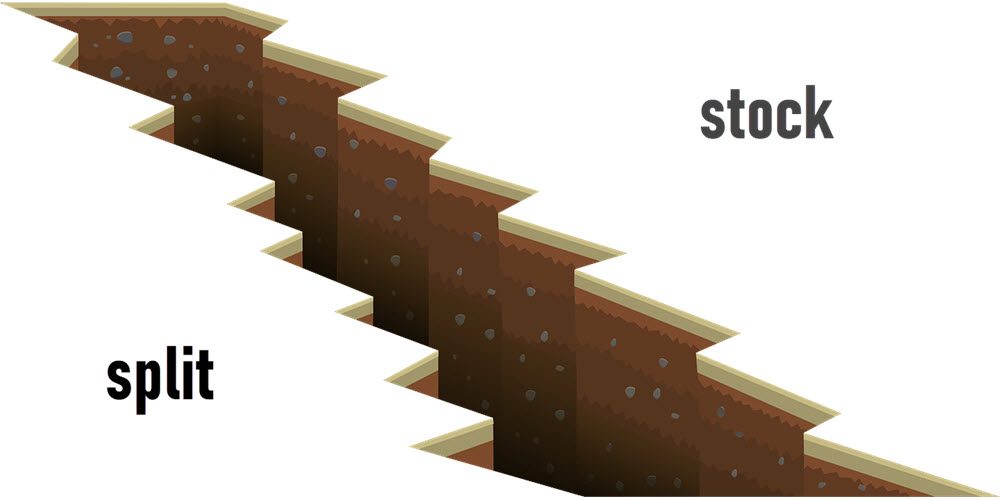For a novice investor, the concept of stock splits can be a bit confusing. What is it? Why would a company intentionally attempt decrease the price of their stock? Why do I suddenly have 300 shares in this company instead of 100?
Therefore, I have decided to write a little about stock splits, why they exist, and how the market normally reacts to a stock split.

What is a stock split?
A company can decide to increase its number of outstanding shares by carrying out a stock split.
Examples:
- Company A decides to do a 2-for-1 stock split. If you have 100 shares in Company A, they will split and you will now have 200 shares in Company A instead.
- Company A decides to do a 3-for-1 stock split. If you have 400 shares in Company A, they will split and you will now have 1200 shares in Company A instead.
Real-world example
Walmart did eleven 2-for-1 stock-splits in the 20th century. The company went public in October 1970 and carried out stock-split #11 in March 1999.
If you had purchased 100 shares in Walmart at the IPO in 1970 and then kept them, you would have been sitting on 204,800 shares in Walmart after stock-split #11.
But why would a company do that?
When the number of outstanding shares are increased through a stock split, the market price of each share drop.
Example: Company A decides to do a 2-for-1 stock split. You have 100 shares in Company A, and right before the stock split they are trading at $300 per share. After the stock split, you have 200 shares in Company A, but they are trading at $150 per share.
As you can see, the total market capitalization of the company was not impacted by the stock-split. The share price was halved, but the total market cap remained the same.
Typically, a company will decide to do a stock-split to make their shares more appealing to a wider range of traders. If a company is doing well but refuses to do stock-splits, it can result in the share price soaring to immense heights. The most extreme example is NYSE: BRK.A, where the current stock price exceeds 414 530 USD per share. If anyone wants to purchase 100 shares in this company, they need to invest well over 40 million dollars.
Having a high share price keep many investors out, including those who might be capable of buying one single share in the company but refrains from investing since they only by round lots (i.e in multiples of 100).
When a company decides to do a stock-split, it is typically with the hope of boosting the share price over time, as more investors will see the company as a possible investment. Higher liquidity can turn decrease the spread, and this can make the stock even more popular.
A real-world example
One example of a company that has carried out several stock-splits is Apple Inc.
- In December 1980, Apple went public at $22 per share.
- In June 1987, the stock was split on a 2-for-1 basis.
- In June 2000, the stock was split on a 2-for-1 basis.
- In February 2005, the stock was split on a 2-for-1 basis.
- In June 2014, the stock was split on a 7-for-1 basis.
- In August 2020, the stock was split on a 4-for-1 basis.
At the time of writing, NASDAQ: AAPL is currently trading at circa 150 USD per share. If you want to buy 100 shares, you therefore need to invest around 15,000 USD.
Market expectations
Share prices have a tendency to go up right after a stock-split, turning it into a bit of a self-fulfilling prophecy.
Not only can a stock-split make the shares more attainable for a wider group of investors; it can also be a strong signal to the market. A stock-split signals that the company leaders have great faith in the company and expects it to continue to do so well that the share price will be soaring, and a stock-split is necessary to bring it down to a more appealing level for investors.
There is also the market expectation that greater liquidity will decrease the spread, thus making the shares even more desirable.
Of course, there are never any guarantees. The market can be finicky and none of us knows the future. If stock-splits always led to strongly increased share prices over time, companies would be doing them left and right.